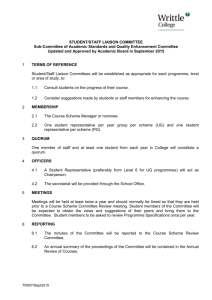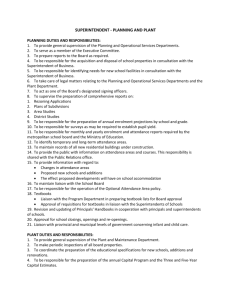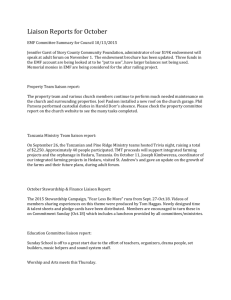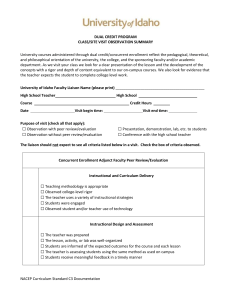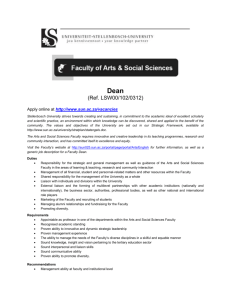Student Liaison Officers
advertisement
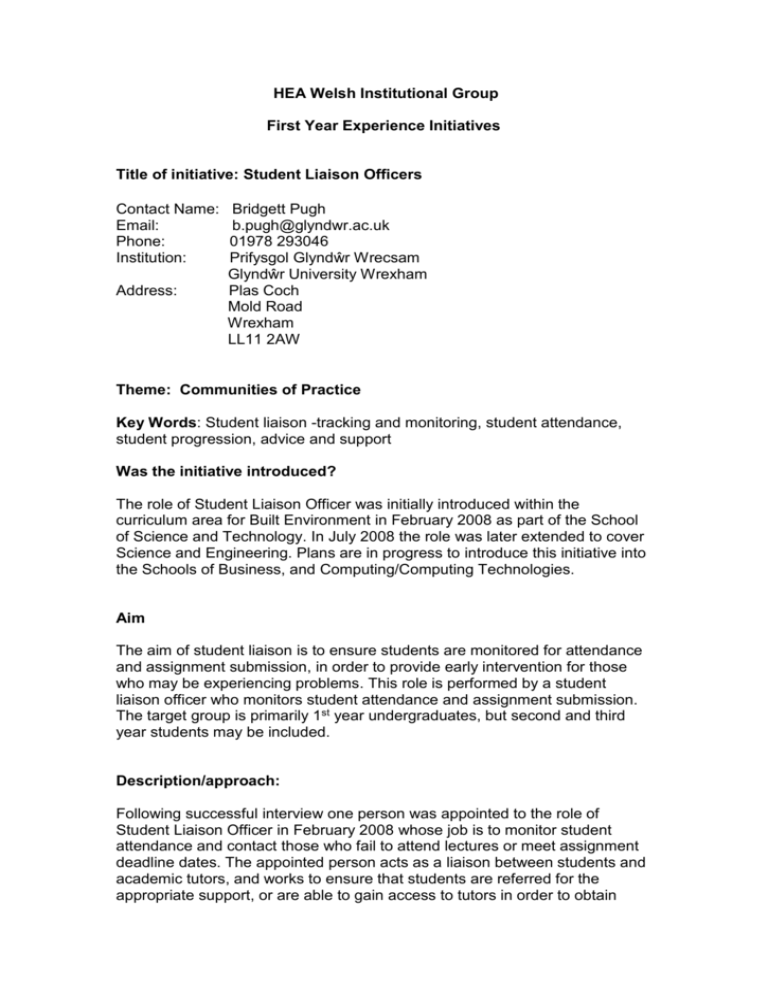
HEA Welsh Institutional Group First Year Experience Initiatives Title of initiative: Student Liaison Officers Contact Name: Email: Phone: Institution: Address: Bridgett Pugh b.pugh@glyndwr.ac.uk 01978 293046 Prifysgol Glyndŵr Wrecsam Glyndŵr University Wrexham Plas Coch Mold Road Wrexham LL11 2AW Theme: Communities of Practice Key Words: Student liaison -tracking and monitoring, student attendance, student progression, advice and support Was the initiative introduced? The role of Student Liaison Officer was initially introduced within the curriculum area for Built Environment in February 2008 as part of the School of Science and Technology. In July 2008 the role was later extended to cover Science and Engineering. Plans are in progress to introduce this initiative into the Schools of Business, and Computing/Computing Technologies. Aim The aim of student liaison is to ensure students are monitored for attendance and assignment submission, in order to provide early intervention for those who may be experiencing problems. This role is performed by a student liaison officer who monitors student attendance and assignment submission. The target group is primarily 1st year undergraduates, but second and third year students may be included. Description/approach: Following successful interview one person was appointed to the role of Student Liaison Officer in February 2008 whose job is to monitor student attendance and contact those who fail to attend lectures or meet assignment deadline dates. The appointed person acts as a liaison between students and academic tutors, and works to ensure that students are referred for the appropriate support, or are able to gain access to tutors in order to obtain academic advice. In summer 2008 the role was expanded to provide a summer support scheme to track and monitor ‘at risk’ students required to resubmit assignments or re-sit exams following June/July assessments boards. Anticipated outcomes The anticipated outcomes will be that as a result of regular monitoring and early intervention, there will be an eventual improvement in first year progression, and fewer students having to re-sit assessments. Of those students needing to undertake re-sits it is anticipated that through regular liaison the likelihood of returning to study will increase thus avoiding disillusion and drop out. Evidence of actual outcomes The role of student liaison is not as yet well established enough to judge the longer term effects on student progression. Despite this evidence from the extra monitoring and support undertaken during July/August 08 does suggest the role having some impact on at risk students. Data evidence suggests a correlation between this monitoring role and an increase in students returning following re-sit or repeat year requirements from summer 2008 assessment boards. In September 2008 there appeared to be a 13% increase (as a percentage of enrolments) in this type of student returning to continue into the second year of their course. There also appeared to be a direct correlation between the type of contact and the likelihood of students returning. The student group were monitored, and of those where successful personal contact was made and guidance provided, 85% returned to resume their studies, compared with a 51% return from those students e mailed, and 41% of those who could not be contacted. Longer term evidence of outcomes will continue to be monitored. Reflection/impact Within the university the role of Student Liaison is a new organisational development which could serve to bridge a gap in student support. Currently both teaching and administrative staff have to focus on their main role – academics with teaching assessment and research, and administrative staff supporting the clerical and organisational needs within their particular courses. It is felt that the student liaison role gets lost with the consequences of risking early student withdrawal. Agreement has been reached about the need for a first point of contact for students experiencing difficulties, and once the role of student liaison becomes established it could be subsumed as part of a tutorial system for first year undergraduates. Students would receive the additional advice and guidance needed and the innovation could become vital in improving the student experience as well as impacting directly on student success. Plans are in place to develop this role further and appoint persons in the areas for Business, and Computing/Communications Technology.
